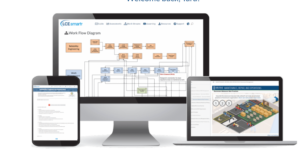Risk-Based Asset Management Guides Energy Company’s Aging Asset Conundrum
The President and COO of a nationwide energy company was faced with a question that many other manufacturing leaders have: whether to replace two aging assets or to continue investing in their refurbishment. This was not a simple decision because both outcomes would require significant financial investment, so it was imperative for both options to be fully investigated to determine the best solution. The President enlisted Life Cycle Engineering (LCE), experts in reliability engineering, to assist in making a decision that was best for the business.
Diminishing the odds of failure using risk-based asset management
To determine the best option, LCE proposed creating an asset management plan (AMP) based on the ISO 55000 standard. The AMP was designed to collect integral information about the division’s present and future business needs for the aging assets, risks against stakeholder requirements, current condition of the assets (referring to assets within the company’s fleet of compressors), and recommendations regarding how those assets should be operated, maintained and re-capitalized.
In order to develop the maintenance plan for these assets, a risk-based asset management (RBAM) strategy was executed first. This activity was crucial because it included a detailed historical information analysis. The LCE project manager then collected and incorporated this data into a failure modes and effects analysis (FMEA). Afterwards, the FMEA yielded a “risk profile” based on the calculation of a risk profile number (RPN). Findings that had an unacceptably high RPN were then further analyzed and new controls were developed. These controls were designed to reduce the likelihood of occurrence, the severity of the incident if it occurred, and the detectability of the failure.
Implementing new procedures to carry out the maintenance plan
The net result of that effort was a 43% reduction in the risk of failure. These new controls were then translated into specific job plans that defined how each activity should be completed, the materials needed for each activity, the frequency in which the activities should be completed, and the duration for each task. These activities were the basis for the maintenance plan portion of the AMP. A critical section of the AMP in this situation was the “renew vs replace” section of the re-capitalization chapter. After the analysis of all collected RBAM data, the recommendation was made to continue investing in the refurbishment of the company’s aging assets thereby avoiding tens of millions of dollars in unnecessary cost to the business.
Additional Information
For more information about improving operational and financial performance, please email us at info@LCE.com or visit www.LCE.com
















